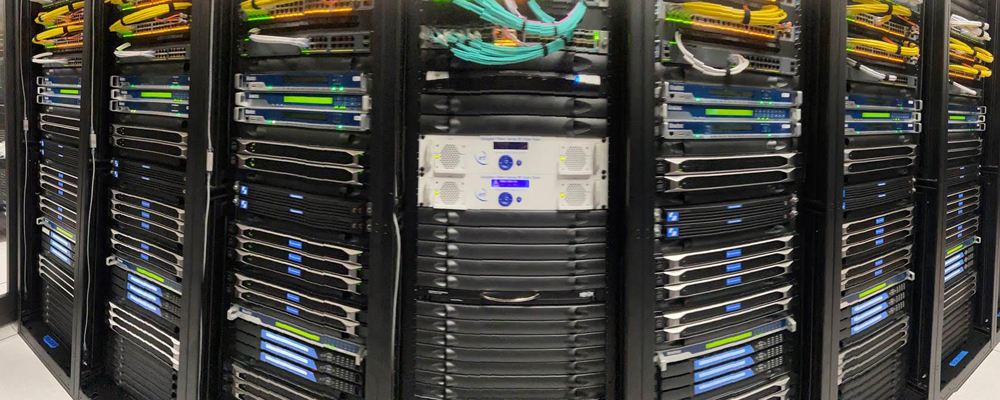
Smooth Sailing For The C-Band Shift

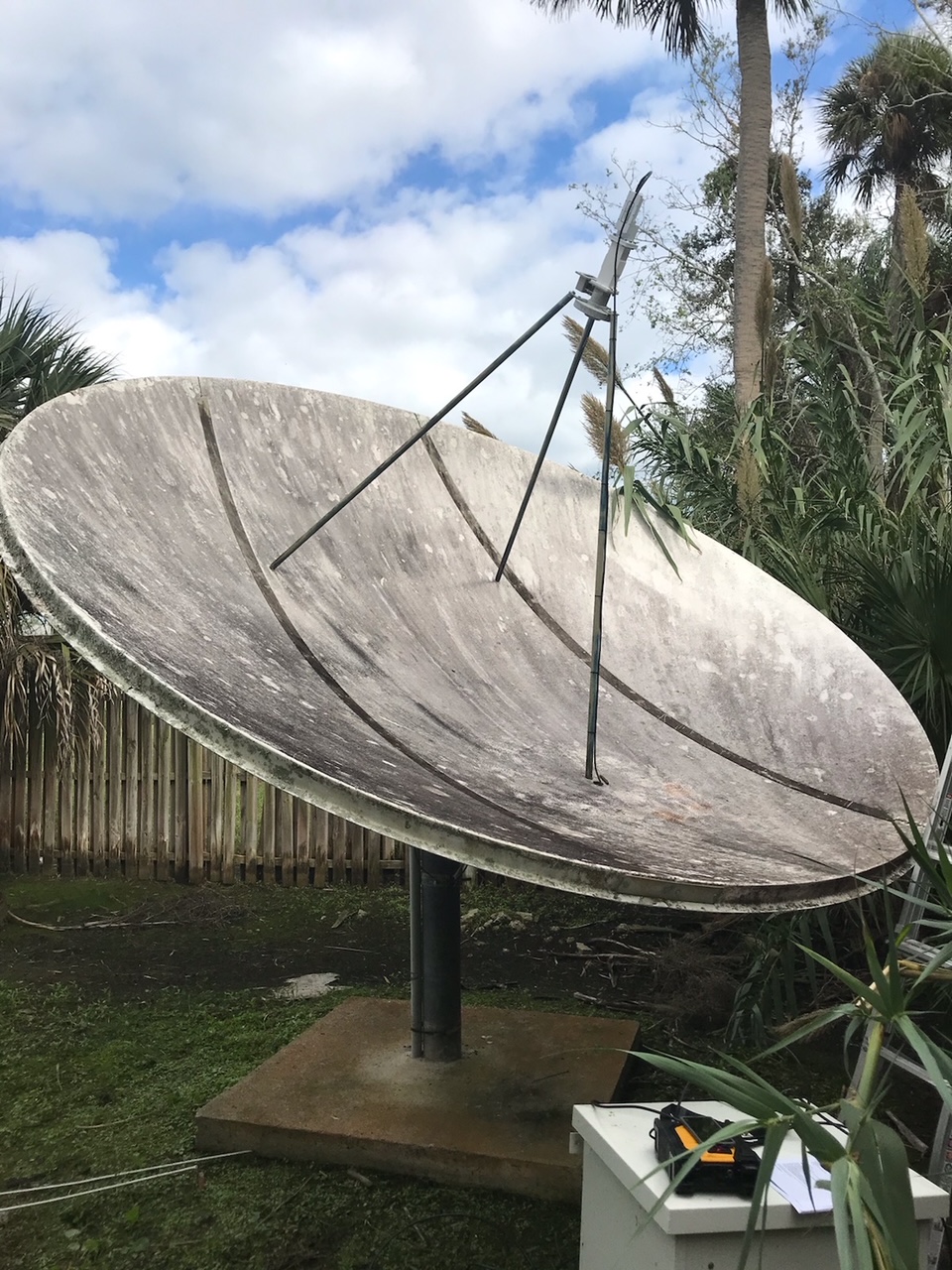
C-band receive antennas are getting new filters to prevent 5G interference.
Less than two years after 987 local stations finished changing frequencies to free up UHF channels 38-51 for use by wireless operators, the broadcast industry is again grappling with an FCC mandate to clear spectrum auctioned off by the federal government for 5G applications.
The current challenge is the “C-band repack,” in which broadcast and cable networks are vacating 300 MHz of C-band spectrum traditionally used to deliver their programming via satellite to affiliates and cable headends —- from 3.7 to 4 GHz — and squeezing their remaining distribution into the remaining 200 MHz from 4 to 4.2 GHz.
The move, which was initially due to be completed by 2025 but is now operating on an accelerated timeline with completion slated for December 2023, requires shifting hundreds of program services to new transponders and/or satellites, installing new compression technology and upgrading thousands of earth station facilities.
Unprecedented Move
SES, one of the two major satellite operators serving U.S. broadcasters along with Intelsat, says a total of 50 customers and close to 200 services are affected by the C-band repack. The company has already done upgrades at 600-700 earth stations with more to come. While SES is used to moving programming services around and installing new antennas at earth stations as a normal course of business, it has never had to move so many services and do so many technology upgrades in such a short time window, says Steve Corda, VP technology in SES’ corporate strategy and development group.
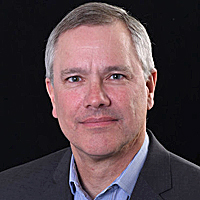
Steve Corda
“It’s very complicated,” Corda says. “Every programmer is unique in their needs, the type of coverage, the amount of power and the amount of backup they need. All of that needs to be considered.”
But operators and broadcasters do have significant financial resources on their side, in the wake of a lucrative auction in which wireless carriers led by Verizon and AT&T bid just over $81 billion for the C-band spectrum. In addition to their significant contribution to the U.S. Treasury, the carriers have pledged to cover the relocation expenses of C-band operators like SES and Intelsat, which include building and launching new satellites and tally around $1.6 billion for each company (other C-band licensees include Eutelsat, Telesat and Star One).
They are also covering technology costs incurred by programmers and incumbent earth station operators like broadcast affiliates and cable headends. And by the FCC rules, the satellite operators are also due to receive incentive payments of $9.7 billion for clearing the spectrum early.
Running Smoothly
By all accounts, the C-band effort is humming along smoothly compared to the early days of the aforementioned “RF repack,” which ran into early delays due to labor shortages, zoning snafus and weather problems before broadcasters and transmission vendors rallied to make the July 3, 2020, completion deadline. Less than two years after the FCC finalized its rules for the C-band migration in February 2020, satellite operators and programmers have already teamed to complete Phase One, clearing the lower 120 MHz of the C-band from 3700 MHz to 3820 in 46 FCC-designated “Partial Economic Areas” by the accelerated deadline of Dec. 5, 2021.
That has allowed 5G transmission to begin on C-band frequencies in those markets, though launches were delayed by the FCC for several weeks in many cities due to well-publicized concerns over interference between 5G signals and radar altimeters used by airplanes during landings (concerns broadcasters say were overblown).
And operators and broadcasters say they are on track to complete the comparatively bigger Phase Two, vacating the remaining 180 MHz by Dec. 5, 2023. When it’s finished, 5G operations will actually be constrained to 3700-3980 MHz, leaving a 20 MHz guardband to protect television distribution starting at 4000 MHz.
“Everybody knew it was coming, and had time to plan and organize, and all in all it went pretty smoothly,” says Del Parks, SVP and CTO Sinclair Broadcast Group, of the work done so far.
Sinclair’s Journey

Del Parks
Sinclair is affected by the C-band repack on two fronts, both by changes in the broadcast network feeds received by 190 stations (at 97 locations) and in new requirements for the cable programming it distributes to cable operators nationwide, including Tennis Channel and its bevy of Bally Sports regional sports networks. HEVC compression technology, which is 50% more efficient than MPEG-4 encoding, has been the answer in both areas.
Sinclair has worked with networks like Fox to deploy new HEVC integrated receiver/decoders at its Fox affiliates and used transmission services vendor USSI Global to perform those installations. USSI Global also handled the earth station antenna upgrades, including antenna repointing and the installation of filters that prevent interference to C-band downlinks from higher-powered 5G signals.
Sinclair also purchased new Synamedia HEVC encoding and decoding systems to replace the obsolete MPEG-2 legacy equipment used by the former Fox regional sports networks it acquired as part of the Fox/Disney deal, as well as its other cable properties. USSI Global handled earth station upgrades again at Sinclair’s cable affiliates, but for that piece it worked on behalf of Intelsat.

Paul Spinelli
Sinclair rolled out some 4,000 new IRDs in all and began the transition last spring with “dual-illumination,” launching an HEVC feed for a few cable networks at a time while still maintaining the legacy MPEG-2 feed, says Paul Spinelli, director of distribution and network systems for Sinclair. By early July, the RSNs had completely shifted to HEVC compression.
But Sinclair’s distribution chain wasn’t fully complete, as it was still relying on the master control at the RSNs’ former home at The Woodlands, Texas, while its new master control at Encompass in Atlanta was completed. Sinclair used fiber to pump the video output from The Woodlands to Encompass for HEVC uplink through the summer until the new Encompass master control came online in September.
In addition to HEVC compression Sinclair is also employing the aggressive 16 APSK S2X modulation scheme, which allows it to push more bits through a transponder and helped it quickly vacate two transponders that were in the impacted C-band spectrum.
“We’re squeezing 88 megabits [per second] out of a transponder, and that allows us to put 12 services in a single [36 MHz] transponder,” Spinelli says. “Those services are in a statmux. They average 6.3 Mbps but can go as low as 1.5 Mbps or as high as 15 Mbps depending on what’s happening on any given channel.”
Sinclair’s transition isn’t over yet. Later this year it will take traffic now on Intelsat’s Galaxy 17 bird and consolidate it on Galaxy 15, which will then carry 100% of Sinclair’s cable distribution.
Intelsat’s Role, CBS’s Transition

Tom McNamara
Intelsat has 11 large cable and broadcast network customers initially affected by the C-band migration, and all but one has elected to go to HEVC from their MPEG-4 systems, says Tom McNamara, VP of C-band transition management for Intelsat. Some required new IRDs at affiliates, while others had HEVC-capable MPEG-4 AVC IRDs that could be upgraded with a software update. Intelsat did compression upgrades with broadcasters like Fox, Disney and Sinclair in Phase One, and we will work with cable networks like A&E and WarnerMedia in Phase Two.
Like SES, Intelsat began making C-band migration plans for customers back in 2019. It was looking for aggressive technology adoption to get the ball rolling.
“We selected the customers that were able to turn over the most capacity first,” McNamara says. “To clear 300 MHz, we couldn’t just repack. We needed customers like Sinclair to say, ‘I have X number of transponders, and I can get to .5 times X if the equipment’s there.’ ”
CBS is another Intelsat customer that is migrating to HEVC. The broadcast network is in the process of replacing seven-year-old MPEG-4 systems with new Evertz HEVC gear that includes 16APSK DVB-S2X modulation. The new systems will allow CBS to trim its current 1080i feeds to affiliates from the current 20 Mbps down to 15 Mbps, while setting up the network well for 1080p distribution in the future, says Ken Fuller, VP distribution and technology at ViacomCBS.

Ken Fuller
As a result, CBS will go from a 4-channel multiplex to a 6-channel multiplex per transponder, allowing it drop one transponder on both the Galaxy 19 and Galaxy 28 birds. It will go from three to two transponders on G19 and from two to one on G28, an aging satellite that will eventually be replaced by one of the seven new satellites Intelsat is launching in the next two years.
“That process of upgrading affiliate IRDs is going on right now,” Fuller says. “What we’re doing is replacing MPEG-4 AVC IRDs with new IRDs that handle both MPEG-4 and HEVC. So, we’re able to do the field upgrades right now, while we’re still building out the HEVC headends in New York and Los Angeles. We’ll be done with our upgrade by Q4.”
Fewer Compression Upgrades
Both networks and operators say that in general there are fewer compression upgrades happening for cable networks. That’s because many of them had long-term leases for satellite capacity based on MPEG-2 compression, and some of their traffic is still in standard definition. Since subsequently upgrading to MPEG-4, many cable programmers have found that they are sitting on excess capacity that they could simply unload without having to move to HEVC.
In fact, SES had only one customer that had to make a major compression upgrade as part of the C-band migration. That was Comcast’s Managed Distribution Service (formerly known as HITS, or Headend In The Sky), a package of cable networks designed for small cable headends to pass directly through their plants without having to do expensive processing like transcoding. That system was based on aging MPEG-2 gear and occupied 11 SES transponders.
By replacing the legacy Comcast MDS transmission system with a new Harmonic MPEG-4 system complete with new MPEG-4 IRDs for the affiliates, SES was able to fit the same services in 5.5 transponders, Corda says, “effectively halving the capacity that they need.”
Discovery’s Process
Another major cable programmer affected by the C-band migration is Discovery, which has capacity with both Intelsat and SES. To clear spectrum, Discovery had to move four transponders and eliminate a fifth on Galaxy 13 that was carrying legacy SD networks in MPEG-2, including the original Discovery Channel SD feed that dates back to 1985.
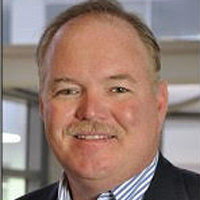
Jim Rossiter
Jim Rossiter, VP distribution Americas & Asia at Discovery Inc., said that moving four transponders was a two-year process given the ripple effect on both Discovery’s domestic and international distribution. The legacy SD feeds are being eliminated by providing affiliates with new CommScope Arris MPEG-4 IRDs that will receive Discovery’s current HD feeds and derive an SD feed for operators still requiring them.
Some 900 headends overall were impacted by the migration. Rossiter said that Discovery received great support from Intelsat throughout the process but that the migration was still disruptive.
“We rarely move satellite transponders, so having to move all of them in a matter of time does take a significant amount of effort not only on the engineering side — my team — but also on the affiliate operations side,” Rossiter says. “It’s more of a lift for them honestly, because they have to do all of the communications, validations, ensuring the client has moved.”
A Second Wave Of Work
In Phase One, Intelsat had five customers compress their services and 70 services move out of the 3700-3820 MHz frequencies. On the ground, it and its partners installed 7,000 IRDs at customer affiliates, 275 receive antennas and 5,000 filters at 575 sites.
But the numbers actually ramp up dramatically for Phase Two, with Intelsat having to ship and install a total of 22,000 IRDs at MVPDs and affiliates and install 13,000 filters at 1,350 sites (with 350 sites already completed. That is addition to migrating 63 services to the upper 200 MHz of C-band, compressing eight more programmers’ services, replacing or building 150- 200 antennas and launching seven new satellites across four rocket launches.
“In Phase 2 we have to clear 180 mhz, so there are more transponders in play,” McNamara says.
Red To Blue Filters
A big part of the increased workload for both Intelsat and SES is that they have to go back to earth stations and replace the interim “red” filters they installed on antennas with final “blue” filters that not only block 5G interference from below but also fight interference from radar altimeters operating above 4200 MHz. Earth stations operating downlinks in the upper part of the C-band have used such filters to prevent interference from airplanes for decades, and the newly designed “blue” filters for 5G incorporate that capability in a single slick package.
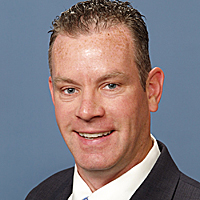
Tim Jackson
Tim Jackson, SVP sales and marketing, the Americas for teleport operator Globecast, says the recent controversy over 5G launches in the lower C-band between airlines and wireless carriers was a “bit amusing,” as the potential impact will be much greater in 2023 when the 5G services are 180 MHz closer to planes’ radar traffic. Both signals are far more powerful than C-band downlinks coming from 26,000 miles up, so both have to be filtered to protect broadcasters’ video.
The other big part of the migration process that still needs to be wrapped up is reimbursement for programmers and earth station operators’ necessary technology investments. Earth station operators like Sinclair and Globecast had the option to take a “lump sum” payment up front and then do the work themselves (often by hiring vendors like USSI Global) or to have the work performed by Intelsat and SES and then submit receipts for reimbursement.
Pinning down an exact reimbursement dollar figure per antenna for the lump sum option is difficult, though the implication is that it is healthy. According to transmission services vendor LinkUp Communications, the lump-sum compensation for a receive-only single-feed antenna is $8,948 per antenna.
Sticking To A Proven Model
When the C-band migration was first discussed several years ago, there was some conjecture that a meaningful chunk of program distribution would move off of satellite to terrestrial means, either via fiber or through managed distribution services over the public internet like Zixi and LTN. Both operators and programmers unanimously say that hasn’t happened, though they continue to deliver some feeds to major MVPDs directly via fiber as they have for years.
Globecast delivers a few channels to major MVPDs via managed internet delivery today, and Jackson admits that he expected more of that to happen with the C-band shift.
“There’s been much less of an impact in the 5G regrooming in people making monumental changes in distribution philosophy than I thought would have been the case,” he says. “I thought we would have seen more folks take the plunge to optimize their distribution models into more of a terrestrial model.”
Rossiter says that Discovery has closely studied the viability of terrestrial distribution and thinks the industry will eventually get there. But he says a programmer like Discovery can’t do it until it could connect to all 1,000 of its affiliate headends.
“You can’t just leave 15% or 20% of affiliates disconnected because you want to move to terrestrial,” Rossiter says. “It doesn’t make sense. Satellite is still a very good point-to-multipoint distribution mechanism, and it works quite well for us.”
































Comments (0)